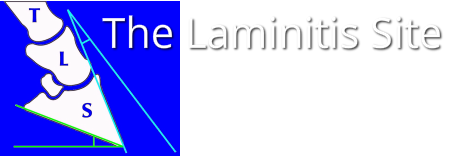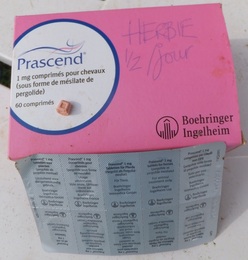| The ECIR group recommends slowly increasing the dose of pergolide when introducing it, ideally in 0.25 mg increments - see www.ecirhorse.org - Pergolide. And the Equine Endocrinology Group now also recommends introducing Prascend gradually: "Some horses show a transient reduction in appetite. It is therefore recommended that PRASCEND be introduced gradually by giving partial doses for the first four days or by administering half the dose morning and evening." Prascend comes in 1 mg tablets scored in half for easy division into 0.5 mg doses. If you need to divide tablets into 4 (for small ponies or for tapering the dose in 0.25 mg increments), talk to your vet to discuss options. It is important that tablets are split accurately, and vets sometimes suggest using a pill cutter/splitter. Other suggestions for dividing Prascend tablets may not be safe or effective - always ask your vet and check the datasheet - NOAH Compendium - Prascend. |
Dissolving 0.5 mg tablet in a small quantity of water and giving half one day and the remaining half the next day - the datasheet states that if dissolving the tablet in liquid, the whole amount should be administered immediately.
Giving 0.5 mg every other day - the datasheet states that Prascend should be given once daily. As the average half life of pergolide has been found to be around 6 hours in horses, extending the time between doses seems counter-intuitive.
Wright, Abra M
Pharmacokinetics of Pergolide in normal mares
MSc Thesis 2009 Kansas State University
Cutting 0.5 mg half tablets into two with a knife - cutting the pills with a knife risks crushing/wasting some of the tablet (the datasheet states that tablets should not be crushed), as well as operator injury (and many horses seem to hate the taste of blood)!
Keep your fingers safe and your horse's medication effective - if you have to divide tablets, use a pill splitter.


 RSS Feed
RSS Feed